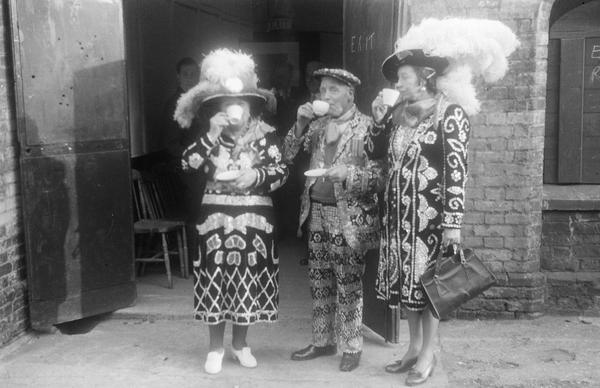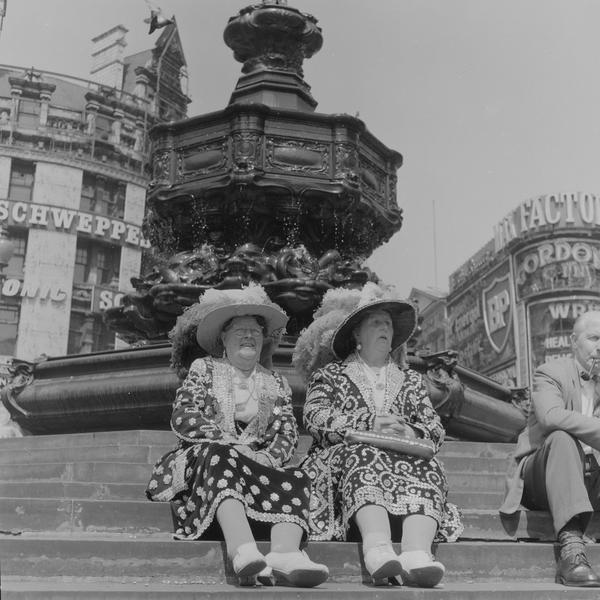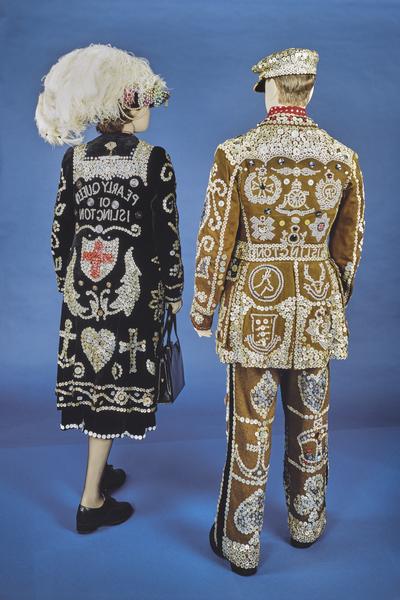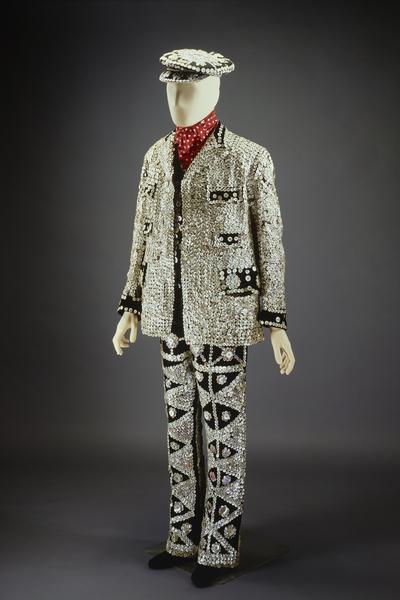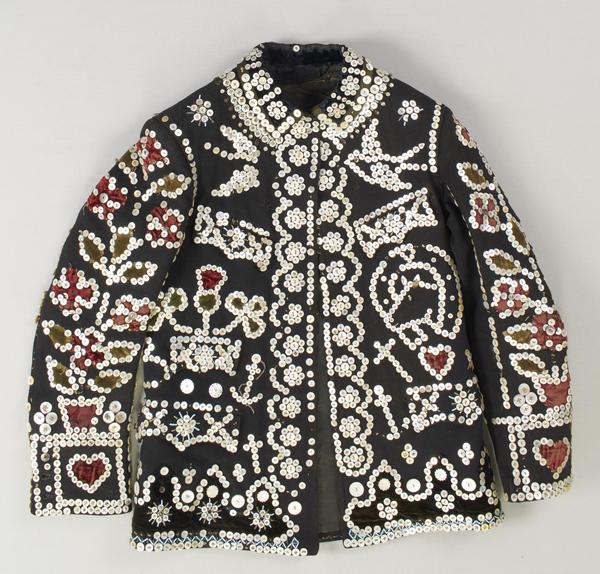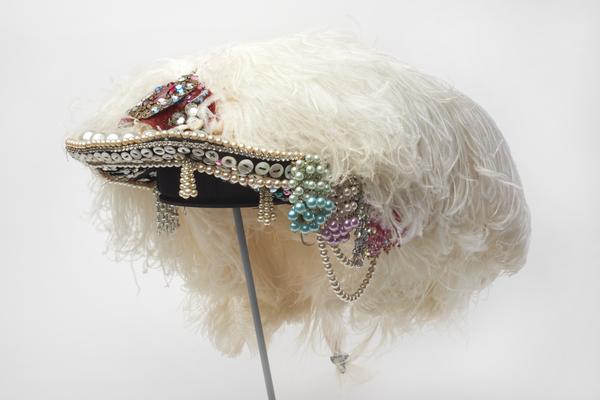Who are the pearly kings & queens?
Covered head-to-toe in mother-of-pearl buttons, pearly kings and queens have been working class London icons since the 19th century.
Since the 1870s

Pearly queens at the Costermongers Harvest Festival Thanksgiving service.
London’s shimmering cockney royalty
You might see them at big London events like jubilees and royal weddings. You might also remember they featured in the London 2012 Olympics opening ceremony. But do you know the history behind this charitable group of button-covered cockneys?
Pearly kings and queens are named after their hats, suits and shoes that are covered in mother-of-pearl buttons. They’ve been a fixture of London public life since the 19th century.
As is customary with royalty, pearly titles are passed down through the generations. But while there’s only one British royal family, every London borough has its own pearlies. They dedicate their time to raising money for charity.
Where do pearly kings and queens come from?
Pearly kings and queens evolved from the costermongers, market traders who sold fruit, vegetables, fish and other produce from a cart or stall on the street. They were said to have sewn mother-of-pearl buttons onto their clothes to set themselves apart.

Joseph Carney, a costermonger selling fish on the streets in St Giles.
Costers were a tight-knit community of working class Londoners. Traditionally, each coster group would elect a leader – a ‘king’ or ‘queen’ – to organise them, keep the peace and stand up for their rights with authorities.
Are pearly kings and queens cockneys?
The history of the costers and the pearlies is tightly linked with cockneys, the name for Londoners born within earshot of the St Mary-le-Bow church on Cheapside, near St Paul’s Cathedral.
“The cockney dialect – and the cockney resilience – is intrinsic to pearly culture”
Cockneys like the costermongers had a distinct dialect. They also developed their own coded language, cockney rhyming slang, so that they could communicate without others understanding.
The cockney dialect – and the cockney resilience – is intrinsic to pearly culture.
Why do pearlies wear pearl buttons on their clothes?
The first pearly king is thought to have been Henry Croft, an orphan and street sweeper born at St Pancras workhouse in 1861. In the mid to late 1870s, he completely covered his suit in pearl buttons to stand out when raising money for orphanages and hospitals. His decoration featured patterns, symbols and slogans such as “All for Charity” – similar to what we see on pearly clothes today.
Croft was probably inspired by the costers’ charitable work as well as the pearly details of their clothes. Maybe he was also inspired by the costumes of music hall coster-singers like Alec Hurley, pictured below, who entertained the crowds with cockney songs.

Note the shiny buttons down the side of Alec Hurley's trousers.
His success encouraged other costermongers to smother their clothes in pearl buttons to attract more money for their charities. The pearly king tradition was born. By 1911, all 28 London boroughs had a pearly family, a total of around 300 people.
How do you become a pearly?
You can’t just call yourself a pearly king or queen. Titles are passed down. Children would be raised in their family’s pearly traditions and eventually be ‘crowned’ with their parents’ title. This pearly princess dress from 1920 would have been worn by a child of pearly parents.
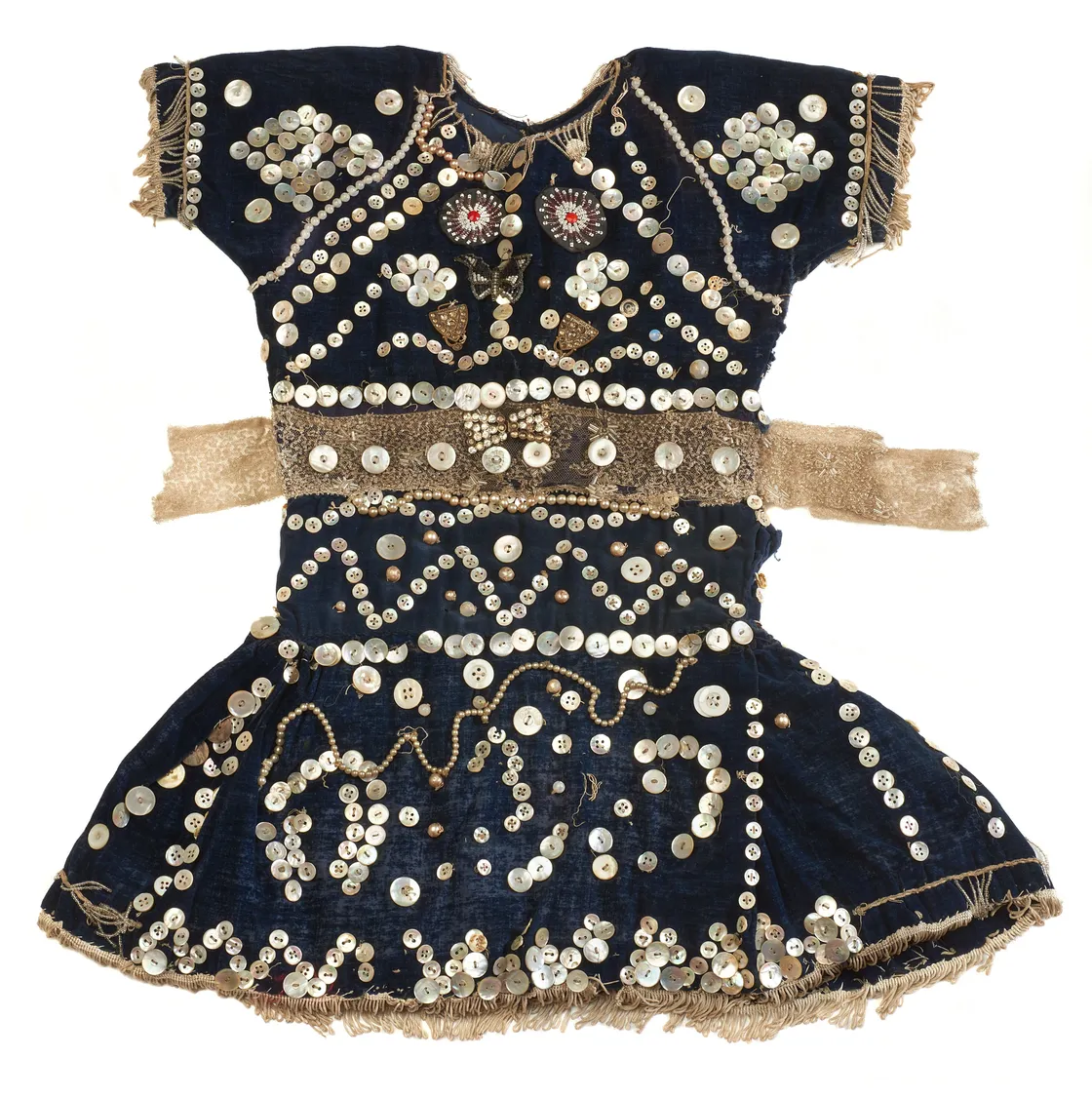
A child's pearly dress of blue velvet covered in pearl buttons and butterfly motifs.
Sometimes the title would pass to a cousin or other relative. And on certain occasions, individuals with a strong proven commitment to charity work may be invited to hold a title.
What do pearly kings and queens do?
Pearlies make lifelong commitments to raising money for charity. You’d find them fundraising on the street and at both small-scale community and major cultural events.
The pearlies also hold annual events. Photographs by Henry Grant show pearlies at the traditional Costermongers Harvest Festival Service on Old Kent Road in full regalia.
They also keep their tradition alive through their button-covered clothes. London Museum has a sparkling collection of suits, dresses and accessories worn by pearlies in the 19th and 20th centuries. There’s even an Alexander McQueen suit inspired by pearly costumes.







